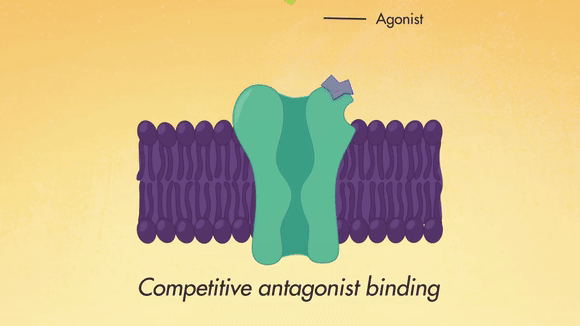Section outline
-

Introduction
Pharmacodynamics (sometimes described as what a drug does to the body) is the study of the biochemical, physiologic, and molecular effects of drugs on the body and involves receptor binding (including receptor sensitivity), postreceptor effects, and chemical interactions. Pharmacodynamics, with pharmacokinetics (what the body does to a drug, or the fate of a drug within the body), helps explain the relationship between the dose and response, ie, the drug's effects. The pharmacologic response depends on the drug binding to its target. The concentration of the drug at the receptor site influences the drug’s effect.
Learning Outcomes
- Interpret the ligand-receptor interaction
- Identify the key regulatory molecules.
- Discuss the relationship between drug dose & clinical response
Course Content
- Basic principles
- Mechanism of drug absorption
- Receptor (receptor for physiological regulatory molecules
- Structural and functional families, receptor as enzyme etc.),
- Agonist, antagonist, potentiation, synergism, drug-receptor interaction
- Factors modifying drug action, drug tolerance, dependence etc.
- Basic concept of drug action, receptor, nature of receptor, drug antagonism
- The relation between drug dose & clinical response
- Signalling mechanism and drug action, ligand-gated channels,
- G-proteins and second messengers
-
Google Meet Live Class Links:
Batch 23 A: Live Class-9, Live Class-10, Live Class-11
Batch 23 B: Live Class-10, Live Class-11, Live Class-12, Live Class-13 (Moti)
Batch 23 PCA: Live Class-11, Live Class-12, Live Class-13, Live Class-14
Batch 23 PCB: Live Class-11, Live Class-12, Live Class-13, Live Class-14
